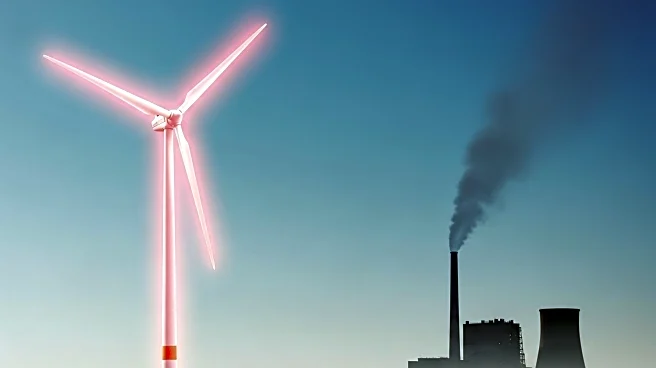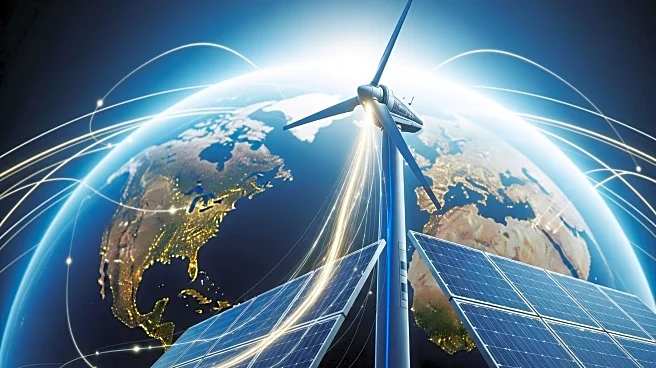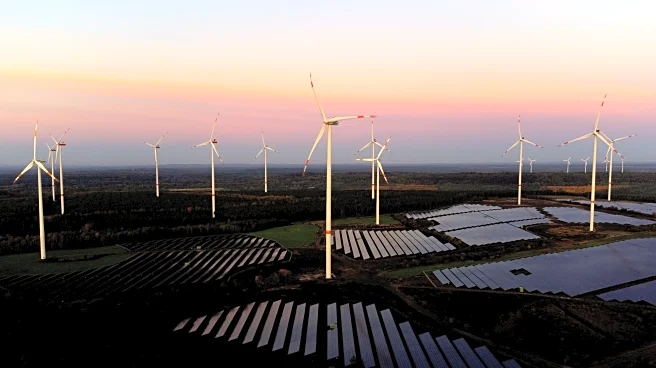What's Happening?
The International Energy Agency (IEA) has revised its forecast for global renewable power growth, projecting a total capacity of 4,600 gigawatts (GW) by 2030, a decrease from the previous estimate of 5,500GW. This adjustment is attributed to less favorable outlooks in the United States and China. In the US, the early phase-out of federal tax incentives for renewable energy, as outlined in President Trump's 'One Big Beautiful Bill,' is a significant factor. Meanwhile, China is transitioning from guaranteed electricity prices for renewable projects to competitive auctions, which is expected to limit profits. Despite these challenges, the IEA notes positive developments in other regions, such as India, which is on track to meet its 2030 renewable energy targets.
Why It's Important?
The revised forecast by the IEA highlights the impact of policy changes in major economies on global renewable energy growth. The reduction in projected capacity could hinder efforts to triple renewable energy use by 2030, a target crucial for combating climate change. The US and China, being significant players in the global energy market, influence international trends and investments in renewables. The slowdown in these countries may affect global energy security and diversification efforts. However, the positive outlook in regions like India and the Middle East suggests potential shifts in the global renewable energy landscape, with new leaders emerging in the sector.
What's Next?
The IEA's report suggests that while the US and China face challenges, other regions are poised for growth in renewable energy. India is expected to become the second-largest growth market for renewables, with capacity set to increase significantly. The Middle East and North Africa are also projected to see a 25% rise in renewable capacity. These developments may lead to a redistribution of global renewable energy leadership, with countries outside the traditional powerhouses taking on more significant roles. Stakeholders in the renewable energy sector will likely monitor these shifts closely, adjusting strategies to align with emerging markets.
Beyond the Headlines
The IEA's forecast revision underscores the complex interplay between national policies and global energy trends. The shift in China towards competitive auctions reflects broader economic strategies that could influence other sectors. In the US, the phase-out of tax incentives may signal a broader policy shift under President Trump's administration, potentially affecting future investments in clean energy. These changes highlight the importance of stable and supportive policies in driving renewable energy growth, emphasizing the need for international cooperation to achieve climate goals.











